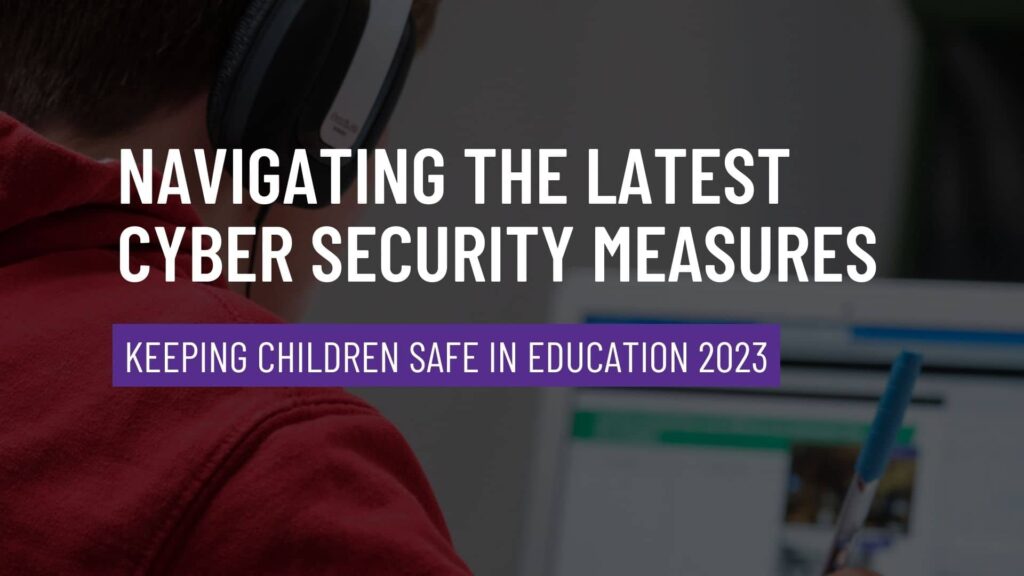In an era dominated by technology, ensuring the safety of children in educational environments extends beyond physical spaces to the digital realm. It is vital that measures are put in place to foster a secure online learning environment for students, taking guidance from Keeping Children Safe in Education 2023.
The 2023 update acknowledges the need for a comprehensive approach to child safety, encompassing both physical and virtual domains. With educational institutions increasingly integrating technology into their curriculum, the potential risks and challenges associated with online spaces have become more pronounced. The guidelines are designed to address these challenges and set the foundation for a safe and secure educational environment, online and offline.
A critical element of the guidelines is the emphasis on robust IT policies within educational institutions. These policies serve as a framework, governing the use of technology, outlining acceptable practices and delineating the boundaries to ensure a safe and secure online environment for students. Educational institutions are encouraged to take a proactive approach by regularly reviewing and updating their IT policies, thus aligning them with technological advancements and emerging threats.
Empowering Educators
Recognising educators’ pivotal role in shaping a safe digital space, the government’s guidelines emphasise the importance of equipping teachers with the knowledge and skills necessary to navigate the digital landscape effectively. Training programs focused on cybersecurity awareness and responsible technology use are encouraged to ensure that educators can serve as informed guides for students in the online realm, fostering a culture of digital literacy.
Cybersecurity Measures
The emphasis on cybersecurity measures tailored for educational institutions remain a cornerstone of the guidelines. This involves the implementation of robust firewalls, antivirus software and encryption protocols to safeguard sensitive information. Regular security audits and assessments are recommended to identify vulnerabilities and ensure a proactive response to potential threats, contributing to a resilient digital infrastructure within educational settings.
Collaboration with Technology Providers
Recognising the dynamic nature of technology, the government encourages collaboration between educational institutions and technology providers. By fostering partnerships that prioritise the safety and privacy of students, while also leveraging technological advancements to enhance the learning experience, a more secure ecosystem can be created. This collaborative approach ensures that educational technology evolves in tandem with the best interests of students and educators.
Promoting Digital Citizenship
In addition to technical measures, the guidelines underscore the importance of instilling a sense of digital citizenship among students. Beyond safeguarding measures, educational curricula should include components that educate students about online etiquette, responsible social media use and the potential consequences of inappropriate online behaviour. By fostering a culture of digital responsibility, students are better equipped to navigate the online world safely and responsibly.
As the educational landscape continues to evolve, the UK government’s “Keeping Children Safe in Education 2023” guidelines reflect a proactive response to the challenges posed by the digital age. By prioritising IT policies and cybersecurity measures, the government aims to create a secure and nurturing online environment where children can learn and thrive. It is incumbent upon educational institutions, educators and technology providers to collaboratively implement and uphold these guidelines, ensuring a safer and more resilient future for the next generation.
Not sure if you are covered? Click here to request your free cyber security audit from Key Digital.
